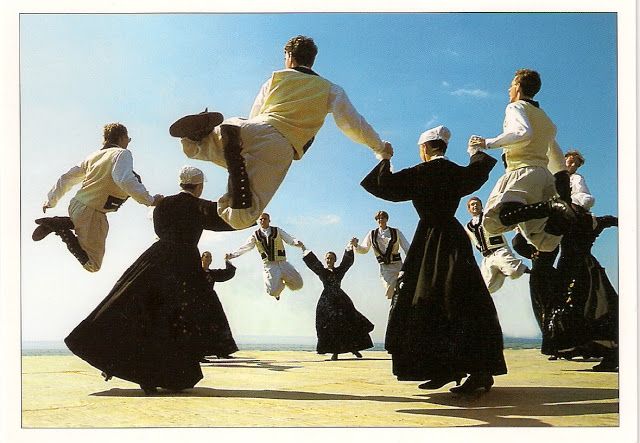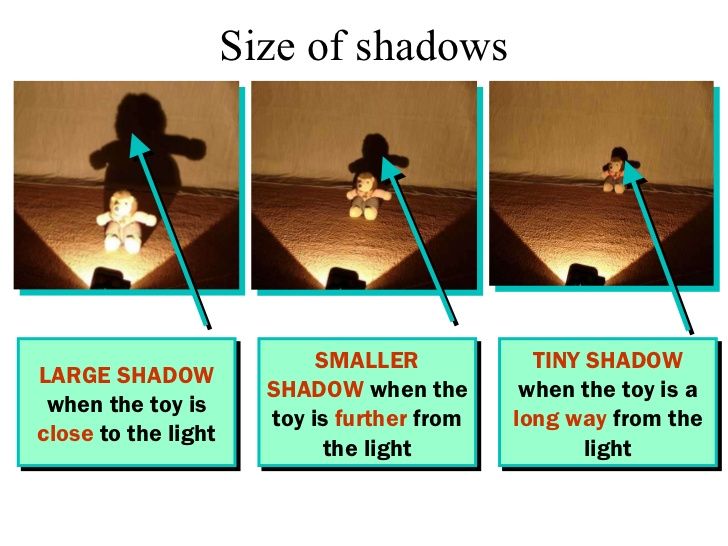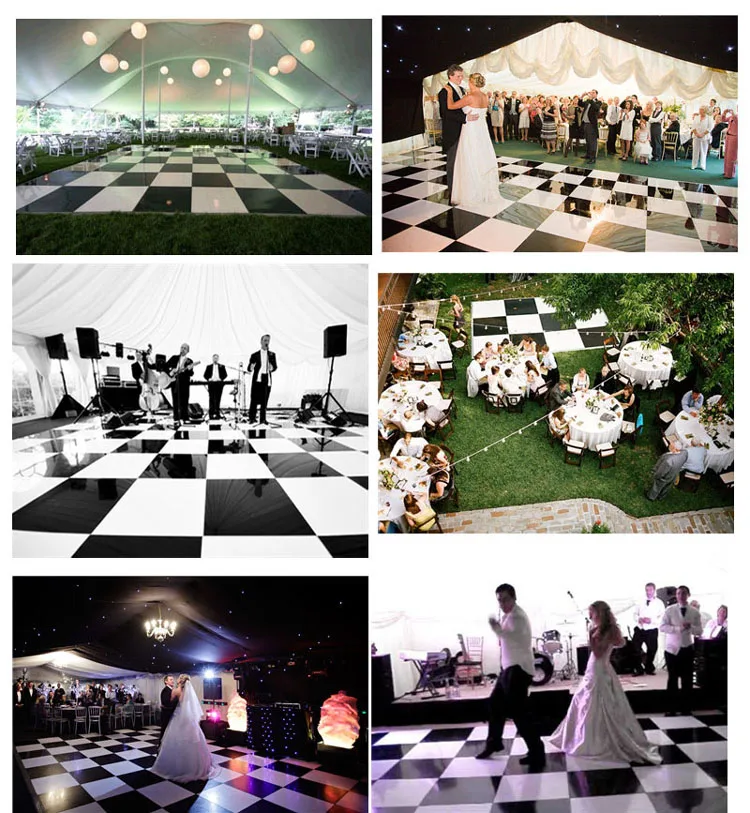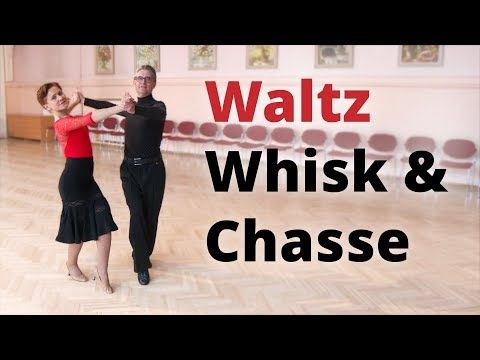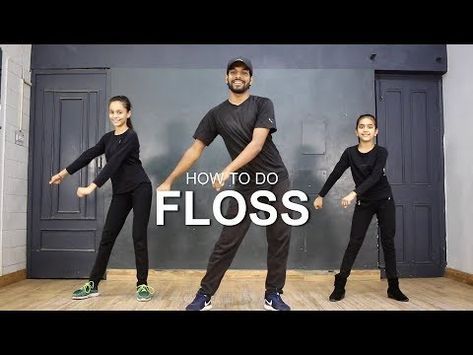How to dance the gavotte
What is The Gavotte? | Dance & Classical Music
Coming from the area of the Gavot in Brittany, the gavotte is a dance in duple time usually of a moderate tempo. In the late 16th century, the Gavotte was usually associated with the branle, which had become popular earlier that same century. At the court of Louis XIV, the gavotte appeared as one of the many optional dances in a dance suite. It eventually replaced the branle in the dance suite and was a popular dance because it involved kissing; this was eventually replaced by the presentation of a bouquet of flowers.
Its music was distinctive because it began not on the first beat of the measure but at the half measure, giving the music an upbeat. In the dance suites, the gavotte was usually paired with the sarabande, a triple-meter dance.
The Gavotte
Like the branle, the gavotte was a line or a circle dance. The basic step involved dancers moving alternately to the left or right to a count of four. These steps combined large outward steps (pied largi), the other foot drawn near the first (pied approche), a pied largi, and a pied joint (the other foot drawn in). Complicating additions such as skip steps and jumps were inserted after each of the 4 original steps and foot crossings were also added.
Composer to the royal court, Jean Baptiste Lully (1632-1687) used the gavotte in his operas, such as this gavotte and air from his 1685 opera Roland.
Jean Baptiste Lully: Roland – Act II Scene 5: Gavotte – Air – Gavotte (da capo) (Indianapolis Baroque Orchestra; Barthold Kuijken, cond.)
Baroque Dance: Thésée Gavotte
Other French composers, such as Jean-Philippe Rameau (1683-1764), also used the gavotte in their operas. His 1754 allegorical ballet La naissance d’Osiris has paired gavottes. The work was written to celebrate the birth of the Duc de Berry, who would later be crowned as Louis XVI.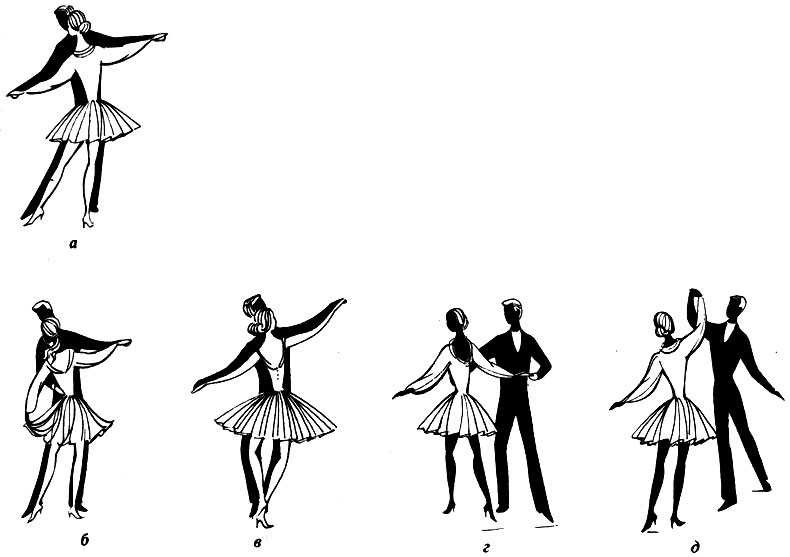
Jean-Philippe Rameau: La naissance d’Osiris – Premiere et deuxieme gavotte Capella Savaria; Mary Terey-Smith, cond.)
The last of his operas, and one of his five trgdédies en music, Abaris (also titled Les Boréades) was never staged in Rameau’s lifetime. The work was in rehearsal in 1763 at the Paris Opèra, but it was abandoned. One problem in the preparation came when the Paris Opèra burned down during rehearsals. Another was that the tragédie lyrique form was considered archaic and out-of-date. The first performance was in 1770, in a concert performance six years after Rameau’s death. Its first staged presentation had to wait until the 20th century.
Jean-Philippe Rameau: Abaris ou les Boréades – Gavotte pour les Fleures et les Zéphirs (Capella Savaria; Mary Terey-Smith, cond.)
In Germany, composers such as Heinrich Biber included gavottes in their dance suites.
Heinrich Biber: Balletti a 6 – VII. Gavotte (Clemencic Consort; René Clemencic, cond.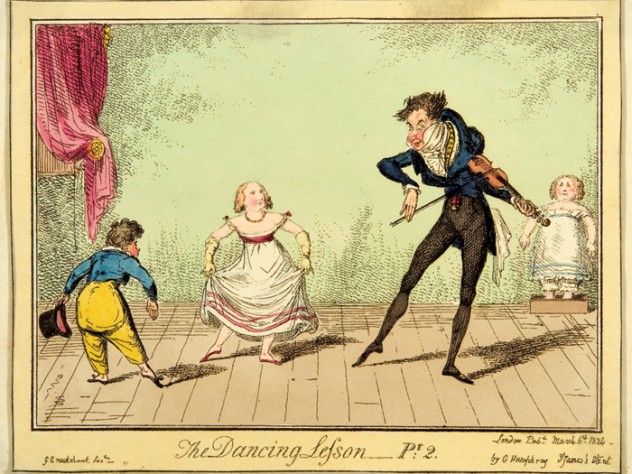 )
)
The six suites for two violins and continuo that Johann Pachelbel (1653-106) published under the title of Musicalische Ergötzung (Musical delight) take the form of a sonata followed by a series of dances, including gavottes.
Johann Pachelbel: Musicalische Ergötzung – Partita in G Major, III: Gavotte (Cologne Musica Antiqua; Reinhard Goebel, cond.)
Bach wrote gavottes as did Mozart, using it in the ballet music for his opera Idomeneo.
Wolfgang Amadeus Mozart: Idomeneo, re di Creta – Ballet Music, K. 367: Gavotte (Bamberg Symphony Orchestra; Karl-Heinz Steffens, cond.)
One of the rare uses of the dance in the 20th century was in Sergei Prokofiev’s look back to the styles of the 18th century, his Classical Symphony, written in the style of Haydn. A brief movement lasting less than 2 minutes, the gavotte replaces the more typical minuet and trio movement that Haydn would have used.
Sergei Prokofiev: Symphony No. 1 in D Major, Op. 25, “Classical” – III. Gavotte: Non troppo allegro (Ukraine National Symphony Orchestra; Theodore Kuchar, cond.)
1 in D Major, Op. 25, “Classical” – III. Gavotte: Non troppo allegro (Ukraine National Symphony Orchestra; Theodore Kuchar, cond.)
The Ladies’ Home Journal for 1914 had a surprising acknowledgment of the modern gavotte in the dancing of Anna Pavlova, who had introduced it in her Pavlova Gavotte in 1913. The dancers Vernon and Irene Castle obligingly provided the magazine with pictures to demonstrate The Castle Gavotte.
The Castle Gavotte, 1914 (Ladies’ Home Journal, November)
The music that the Castles suggested as easiest to dance to was the song The Glow Worm, which Pavlova had also used in her dance. The music was from Werner Giger’s Lysistrata.
Werner Giger / Paul Lincke: Lysistrata – Gluhwurmchen-Idyll (The Glow Worm) (arr. for chamber ensemble) (I Salonisti)
And, of course, there’s the Ascot Gavotte from My Fair Lady.
For more of the best in classical music, to our E-Newsletter
My Fair Lady: the Ascot Gavotte
| |||||||||||||||||||||||||||||||||||||||||||||||||||||||||||||||||||||||||||||||||||||||||||||||||||||||||||||||||||||||||||||||||||||||||||||||||||||||||||||||||||||||||||||||||||||||||||||||||||||||||||||||||||||||||||||||||||||||||||||||||||||||||||||||||||||||||||||||||||||||||||||||||||||||||||||||||||||||||||||||||||||||||||||||||||||||||||||||||||||
Streetswings Dance History Archives: Gavotte
| |||||||||||||||||||||||||||||||||||||||||||||||||||||||||||||||||||||||||||||||||||||||||||||||||||||||||||||||||||||||||||||||||||||||||||||||||||||||||||||||||||||||||||||||||||||||||||||||||||||||||||||||||||||||||||||||||||||||||||||||||||||||||||||||||||||||||||||||||||||||||||||||||||||||||||||||||||||||||||||||||||||||||||||||||||||||||||||||||||||
Historical Gavotte dance
want to write
15
+15
0
| Miscellaneous
Historical dance
Historical dance Gavotte
Country dance, mazurka, minuet - these phenomena belong to the fundamental dances of the Middle Ages. In the same period of time, another historical dance called Gavot developed. It is about him that we will talk today. nine0003
In the same period of time, another historical dance called Gavot developed. It is about him that we will talk today. nine0003
Origin and development of dance
Gavotte is a French folk dance. At its core, it is a successor to the traditions of the minuet. The gavotte referred to a graceful dance with slow, flowing movements. Gavotte appeared in the 16th century in the central and southern parts of France. Initially, it was very reminiscent of a round dance, and interest in it quickly faded. In the 18th century, the dance experienced a rebirth. The famous Italian musician Jean-Baptiste Lully introduced it into the repertoire of numerous salons, as well as into court use. Many musicians of that time used dance as a stylization and used composition in excerpts from opera and other theatrical performances. In particular, the gavotte "Manon Lescaut", which was used in the opera by Jules Massenet, gained wide popularity. nine0003
Technique
The gavotte is played at a slow tempo. Its time signature is 2/2. The main feature of this dance is its grace and grace. The music of the gavotte, like the dance itself, is distinguished by its solemnity and nobility. Over time, the gavotte moved from the category of French folk dance and became more widely used in opera and ballet productions. In the 18th century, the movements of the gavotte became a little more complicated. Exquisite curtsy, graceful hand movements became characteristic of him. From the outside, the performance of the gavotte looked like a small ballet production. This similarity contributed to the development of the dance's popularity not only in France, but also abroad. nine0003
historical dance, gavotte, country dance
Share a link
Comments
Blog tags
Find a tag:
Follow @4dancing
4dancing
Small mosaic
large mosaic
Waltz Gavotte
Author - I.N. Kusov.
"Waltz-gavotte" - Russian ballroom dance, created by Ivan Kusov, the author of such classical ballroom dances as:
- "Figured Polka"
Dance "Waltz-Gavotte" consists of two parts: 1st part is slow - Gavotte, 2nd part is fast - Waltz. nine0003
The dance is included in the competitive program for classical (domestic) ballroom dancing for the following age categories of performers:
6th group - "Youth", (17-24 years old), years and older, the total age of the couple is up to 70 years old),
8th group - “Seniors” (35 years old and older, the total age of the couple is up to 100 years old),
9th group - “Grand Seniors” (total the age of the couple is over 100 years old).
Music:
Gavotte's time signature is 4/4. nine0003
Waltz time signature - 3/4.
DESCRIPTION OF THE DANCE
Dance "Waltz-gavotte" has a combined composition and consists of two parts:
1st part - Gavotte (built on the elements of Gavotte), occupies 16 measures of musical accompaniment, musical size 4/4. The pace is moderately slow.
2nd part - Waltz (includes Waltz movements), occupies 32 measures of musical accompaniment, time signature 3/4. The pace is moderately fast.
The whole composition of the dance takes 48 measures of musical accompaniment, different in duration and tempo, and two independent introductions. nine0003
Introduction to the 1st movement - 3 chords - during which the dancers take their starting position to the beginning of the dance.
Introduction to the 2nd movement - 3 chords - during which the dancers take their starting position to perform the first figure of the waltz.
The description of the dance will be given later.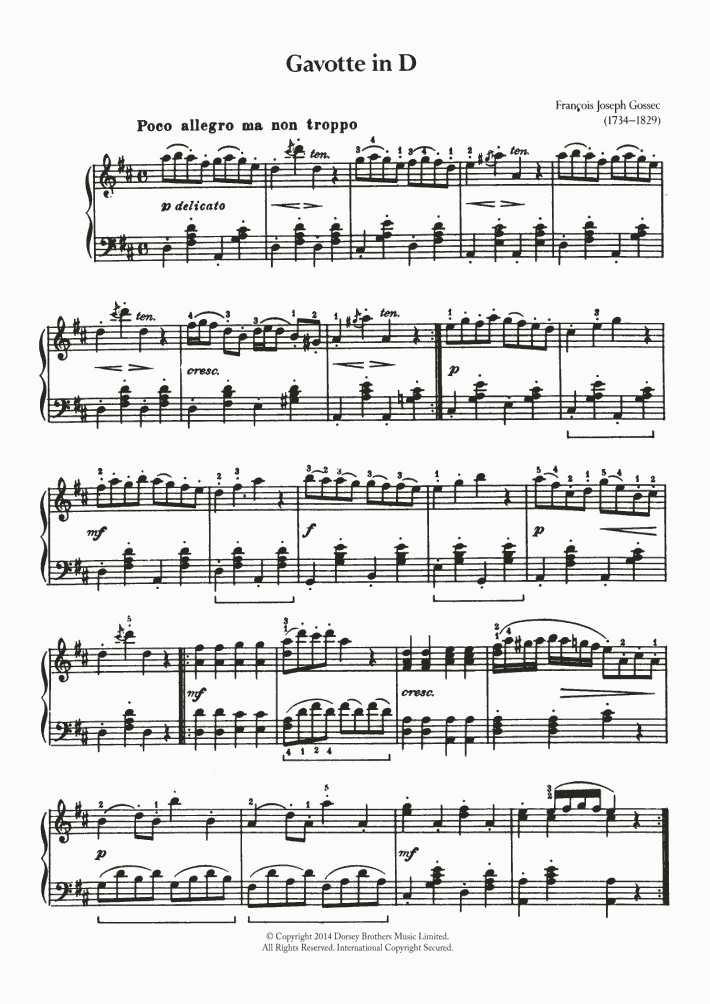
Literature
- " Ballroom dancing. Sarikojumu dejas ". Lasman Milda. Ed. Latvias Valsts Izdevnieciba, Riga (Riga), 1954
- " New ballroom dances ". Collection. Compiled by E. Konstantinova. Publisher Music, L., 1964.
- " New ballroom dancing ". Collection. Compiled by L.G. Stepanova. Ed. Soviet Russia, M., 1969
- " Modern ballroom dance ". Manual for students of cultural institutions, students of cultural and educational schools and leaders of ballroom dance groups. Edited by V.M. Striganova and V.I. Ural. Ed. Enlightenment, M., 1978
- " Historical and everyday dance ". Textbook. I. Voronin. Art Publishing House, M., 1980.
- Educational and methodological recommendations for organizing work with the whole class in elementary school on rhythm, rhythmoplasty and ballroom dancing . Shutikov Yu.N. Saint-Petersburg, 2006
Video for the dance "Waltz Gavotte"
The composition of the dance is presented on two video recordings.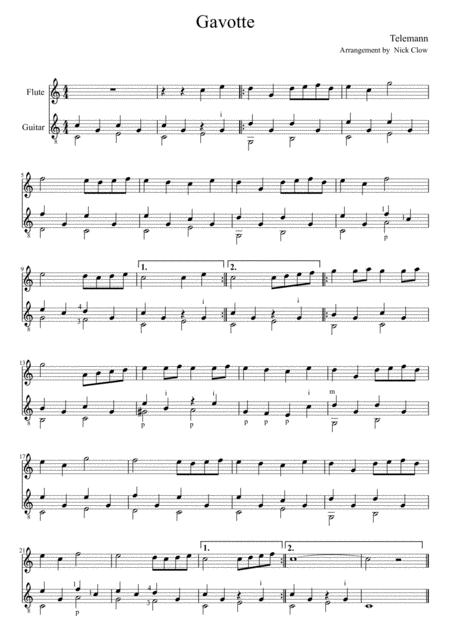
 The gavotte was originated by the French after the Gavot's (Peasants) in the "Pays de Gap" (Gapencais district) region of the Dauphine (1403-1461) or the Alps, French Province. King Louis XIII (1601-1643) of France was said to have created the music for the traditional gavotte which reached the highest mark during the Renaissance. The gavotte became known as "La danse Classique." It became popular in the 17th. century and was danced with as much enthusiasm as the Minuet.
The gavotte was originated by the French after the Gavot's (Peasants) in the "Pays de Gap" (Gapencais district) region of the Dauphine (1403-1461) or the Alps, French Province. King Louis XIII (1601-1643) of France was said to have created the music for the traditional gavotte which reached the highest mark during the Renaissance. The gavotte became known as "La danse Classique." It became popular in the 17th. century and was danced with as much enthusiasm as the Minuet.  Dance Master Vestris created many of the rules for this dance.
Dance Master Vestris created many of the rules for this dance. 
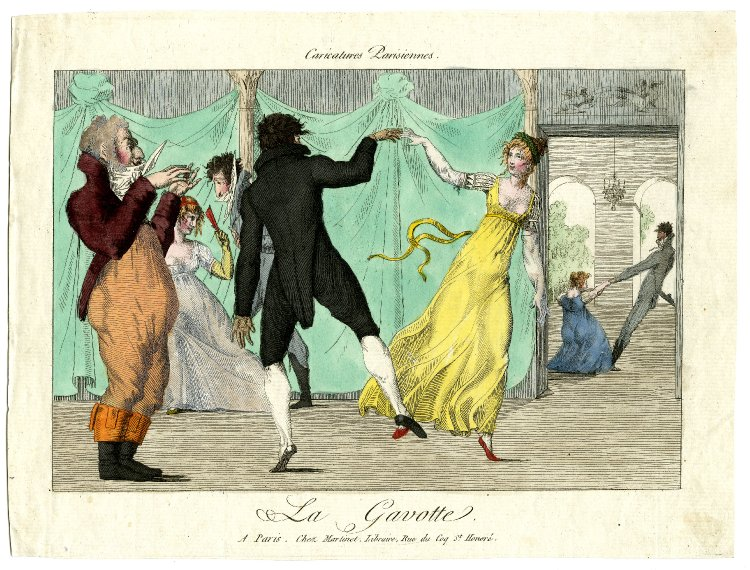
 .. Ancient & Modern
.. Ancient & Modern Research Words that may be related ... to help your searches
Research Words that may be related ... to help your searches